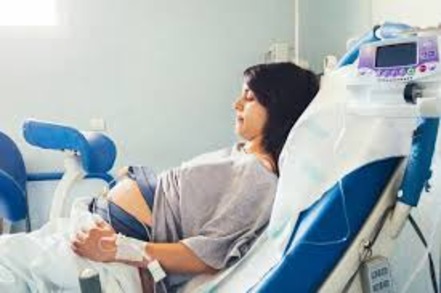Physical Recovery After Pregnancy: Postpartum Healing Guide
Pregnancy and childbirth bring significant changes to a woman’s body. The physical recovery after pregnancy, or postpartum recovery, is a vital phase in which the body restores itself, healing and transitioning back to a state of balance. This recovery process typically lasts from several weeks to months, depending on the type of delivery, overall health, and any complications experienced during pregnancy.
Key Aspects of Postpartum Physical Recovery

Uterine Involution: Understanding the Healing Process
After childbirth, your uterus gradually shrinks back to its pre-pregnancy size—a process called uterine involution. This is facilitated by hormonal changes and breastfeeding, which promote uterine contractions. Uterine involution typically takes 6 weeks, but individual recovery times can vary. This process helps your body return to its normal shape.

Healing of Perineal Tissues
For women who have a vaginal delivery, the perineal area (the area between the vagina and anus) may experience tears, episiotomies (surgical cuts), or swelling. Proper wound care—such as regular cleansing and using pain-relieving methods—can support healing. Stitches will typically dissolve naturally within a few weeks.

C-Section Recovery: Healing the Surgical Incision
For those who had a C-section delivery, recovery involves healing the surgical incision and surrounding tissues. Proper care and following post-operative instructions are crucial. This includes careful wound care, activity restrictions, and pain management. Recovery may take several weeks to months depending on how well the body heals.

Pelvic Floor Rehabilitation: Strengthening the Core
Pregnancy and childbirth can significantly weaken the pelvic floor muscles, leading to issues like urinary incontinence or pelvic organ prolapse. Pelvic floor rehabilitation exercises, such as Kegel exercises, are crucial to strengthening these muscles and improving pelvic floor function. Regular exercise helps to prevent further complications and restores pelvic health.

Abdominal Muscle Recovery
The abdominal muscles, particularly the rectus abdominis (commonly known as the “six-pack” muscles), often stretch and weaken during pregnancy. It’s essential to incorporate gradual strengthening exercises to restore muscle tone. Additionally, maintaining proper posture and using body mechanics can aid the recovery process and reduce discomfort.

Hormonal Changes: Adjusting to the New Normal
Postpartum hormonal fluctuations can cause mood changes, fatigue, and impacts on breastfeeding. Hormonal shifts after pregnancy typically involve the drop in pregnancy hormones like estrogen and progesterone. Adequate rest, balanced nutrition, and support from loved ones can help ease these transitions.

Breastfeeding: Physical and Emotional Recovery
Establishing and maintaining breastfeeding is a central part of postpartum recovery. It can have both physical and emotional implications, requiring the mother to find the right positioning, latch, and comfort for both herself and her baby. Learning to navigate the challenges of breastfeeding can be essential for both maternal and infant health.

Emotional Well-being: Mental Health During Recovery
Physical recovery is closely tied to emotional well-being. Many women experience postpartum blues, anxiety, or sadness after childbirth. It is important to seek professional support and participate in support groups to help manage emotional health during this period.

Postpartum Recovery Tips: How to Heal Faster
✓ Stay Hydrated: Drink plenty of water to aid in faster physical recovery.
✓ Eat Nutritious Foods: Consume high-protein, iron-rich, and vitamin-packed foods.
✓ Rest as Much as Possible: Prioritize sleep and relaxation for better healing.
✓ Exercise Gradually: Start with gentle walking and increase activity as you heal.
✓ Use Supportive Garments: Wear supportive bras and wraps to ease recovery discomfort.
Prioritize Your Physical Recovery After Pregnancy
Physical recovery after pregnancy is an essential part of a woman’s postpartum journey. Whether you had a vaginal birth or a C-section, taking proper care of your body through rest, nutrition, and physical therapy can help speed up recovery and ensure long-term health.
At Anandi Hospital, we provide personalized recovery plans to support your physical health and emotional well-being during this critical period. If you’re looking for postpartum recovery support, book a consultation with our team today.

FAQs About Postpartum Recovery
Postpartum recovery typically takes 6 to 8 weeks, but it can vary depending on factors like the type of delivery (vaginal or C-section) and individual health conditions.
It’s important to wait until you get medical clearance from your doctor. Typically, gentle exercises like walking can start soon after delivery, but more strenuous workouts should wait for about 6-8 weeks.
Focus on proper wound care, getting plenty of rest, and following postpartum instructions from your healthcare provider. Gradually increase activity as your incision heals.
A balanced diet rich in iron, protein, calcium, and vitamins is key. Include lean meats, whole grains, leafy greens, fruits, and dairy products to aid recovery and breastfeeding.
Pelvic floor exercises, such as Kegel exercises, can help strengthen the muscles and improve bladder control. Start these after receiving approval from your healthcare provider.
Yes, hormonal changes after childbirth can cause mood swings or feelings of sadness (postpartum blues). If symptoms persist, it’s important to talk to a healthcare provider to rule out postpartum depression.

